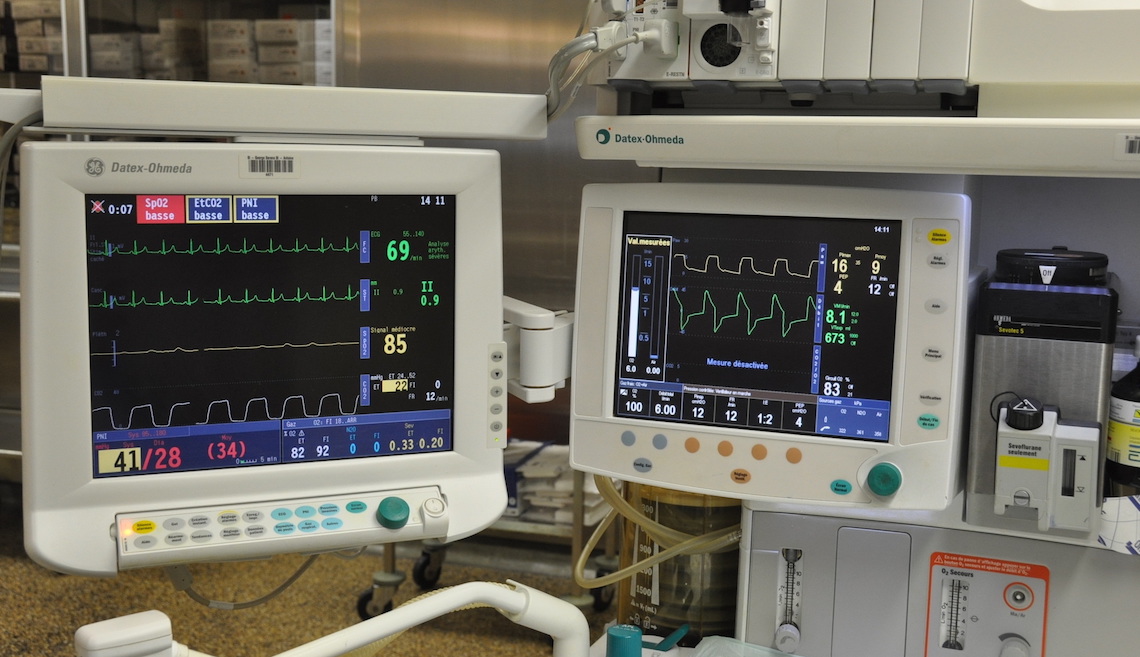
Orthopaedic surgery is the most common cause of anaesthesia.
There is a wide variety of interventions (foot, knee, hip, shoulder, upper limb and spine etc.).
It is a very varied surgery. It ranges from the treatment of osteoarthritis (hip and knee prosthesis), to sports surgery or traumatology.
Patients benefiting from this surgery are of all ages. Senior citizens are particularly concerned by prosthetic surgery.
Several types of anaesthesia can be offered : (general anaesthesia, loco-regional anaesthesia of a limb or a segment of a limb, epidural or spinal anaesthesia).

It is important to note that during your operation, whatever the mode of anaesthesia, you will be under permanent control of the anaesthetist and all his screens where your health parameters appear instantaneously.
Ligament and prosthetic surgeries are so-called "functional" surgeries. They therefore require precautions in the preoperative check-up, special care for post-operative comfort and evaluation of the surgical and anaesthetic risk/benefit ratio.
Scheduled orthopaedic surgery requires a pre-operative anaesthetic consultation.
This consultation allows us to evaluate the pre-operative anaesthetic risk inherent to the patient's medical and surgical history and treatment.
Intra-operative blood saving is a major concern. The objective is to avoid post-operative blood transfusions as much as possible. These are now rare and reduced to a minimum while maintaining safety and following medical recommendations.
Post-operative pain management aims to provide maximum comfort after the operation and is the subject of particular attention.
The last concern, particularly in this type of surgery, is the prevention of the risk of thromboembolism (phlebitis of the lower limbs).
The risk of infection is the subject of national antibiotic-prophylaxis protocols per and postoperatively, which make septic complications exceptional.
This so-called "functional" surgery is not intended for "sick patients", but for patients wishing to regain normal mobility.
Patients are therefore offered "early rehabilitation" for orthopaedic surgery. This approach is now commonplace for many teams in France and around the world.
It is based on the "de-medicalisation" of care as quickly as possible as soon as possible after the operation.

The infusions are therefore withdrawn in the hours following the operation.
Drainages and catheters are avoided as much as possible.
Treatments are administered as early as possible by oral means and reduced to a minimum while preserving the patient's safety and comfort.
The resumption of walking is started in the first few hours after the operation in order to restore physiological functions as quickly as possible and quickly regain autonomy.
Patients are involved in this process and encouraged by a multidisciplinary team (nurses, physiotherapists and doctors).
Rapid or Improved Rehabilitation After Surgery (RIRAS or RAAC in french) now makes it possible to envisage outpatient treatment for a good number of operations.
This means admission to the establishment in the morning and return home during the day or evening.
Certain patients who have undergone hip or knee replacement surgery can benefit from the RIRAS ou RAAC.